Mercedes-Benz EQB First Drive Review: Next electric Benz is a little different

IMMENDINGEN, Germany – Mercedes-Benz is taking two starkly different approaches to electrifying its lineup. Some of its EQ-branded electric cars are standalone models without a gasoline-burning counterpart, like the EQS and the EQE. They’re positioned as electric alternatives to the S-Class and the E-Class, respectively, and they look nothing like their gasoline-powered alter-egos. Others are electric variants of the gas-powered cars themselves; the new GLB-based Mercedes-Benz EQB falls into this category, with the EQC sold in some global markets being another. Only a handful of styling cues inside and out, and of course the powertrain, differentiate these EVs from their gasoline-burning counterparts.
Both approaches are intriguing because they create completely different types of cars. Standalone EVs tend to be more futuristic, both in terms of design and itechnology. EVs based on existing models generally look and feel familiar, which can reassure buyers on the fence about buying an electric car (or truck, in the case of the Ford F-150 Lightning). We've praised the GLB, calling it “a force to be reckoned with in a growing luxury segment.” Now we've traveled to southern Germany to find out how it behaves as an EV.
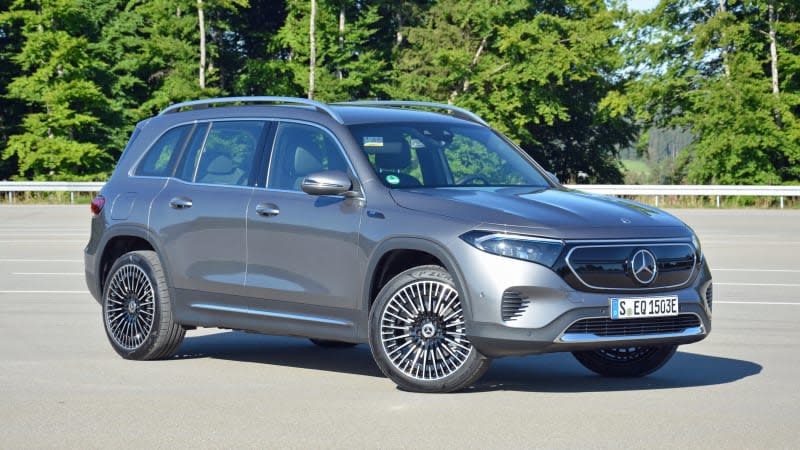
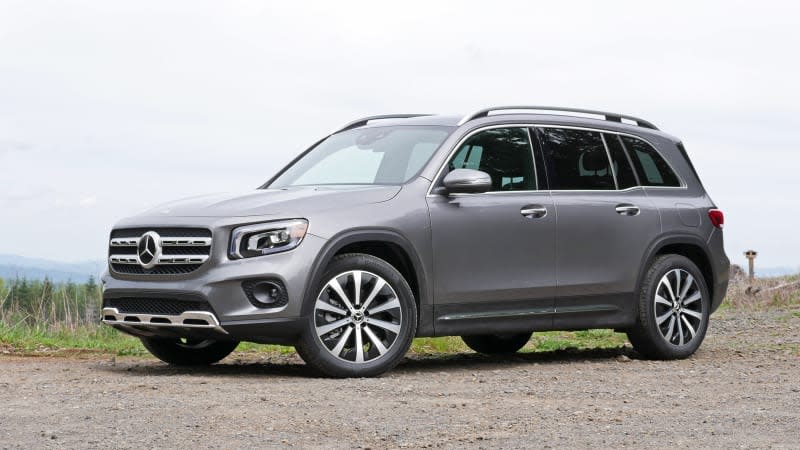
Although the EQB’s body is identical to the GLB’s, designers shifted the front-end design in a more futuristic direction, above left, to bring the crossover in line with other members of the EQ range. The headlights are thinner and swept-back instead of rectangular, and they flank a black piece of trim that replaces the grille. The new look is markedly less outdoorsy but it works well. From the side, the distinctive beltline kink above the rear wheel arch remains, while the back end gains the light bar that defines other EQs.
These changes aren’t drastic, but they help the EQB achieve a drag coefficient of 0.28, down from 0.32 for the GLB. Felix Rothfelder, the global product manager for the EQB and EQE, told me that the EQB is the first car that the firm designed entirely digitally. The design was locked in and key parameters were tested using only software before the first model was built and checked in real-world conditions.
Pay no attention to the pink-ish seat color in our photos; it’s available on European-spec cars, like the EQB 300 that I drove in Germany, but it will not be offered in the United States. That means EQB-specific bits inside are largely limited to illuminated door sill plates and a tweaked version of the MBUX infotainment system whose navigation software factors in topography, traffic conditions, and charging stops when planning a route. It’s a clever piece of technology that takes some of the guesswork out of driving an EV on a road trip. It's displayed on the same 10.25-inch touchscreen that you find in the GLB.
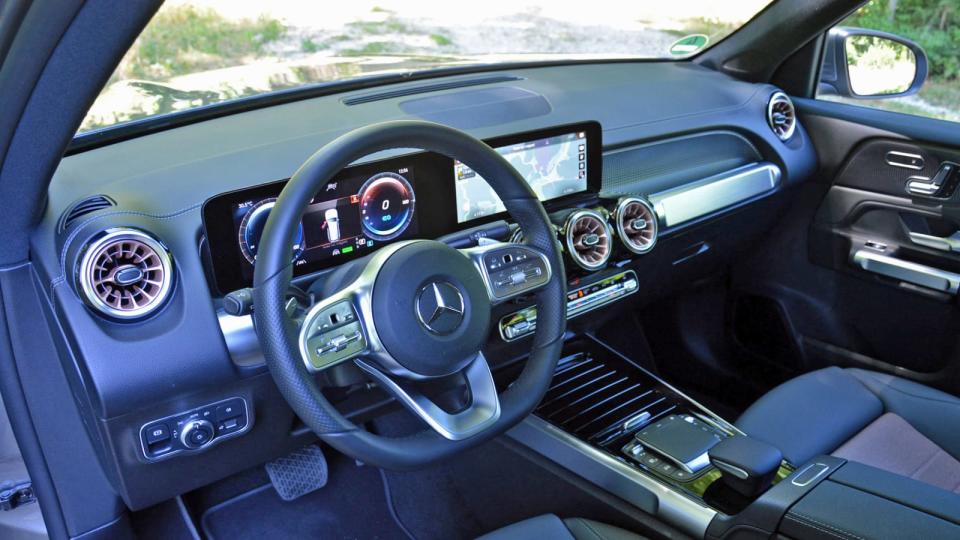
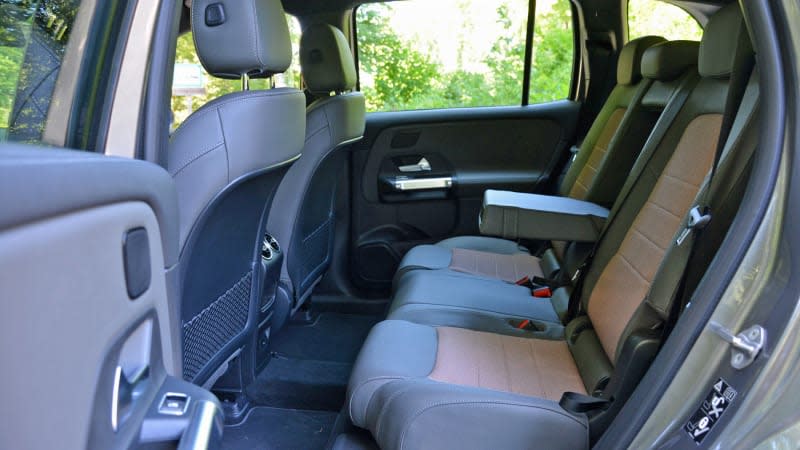
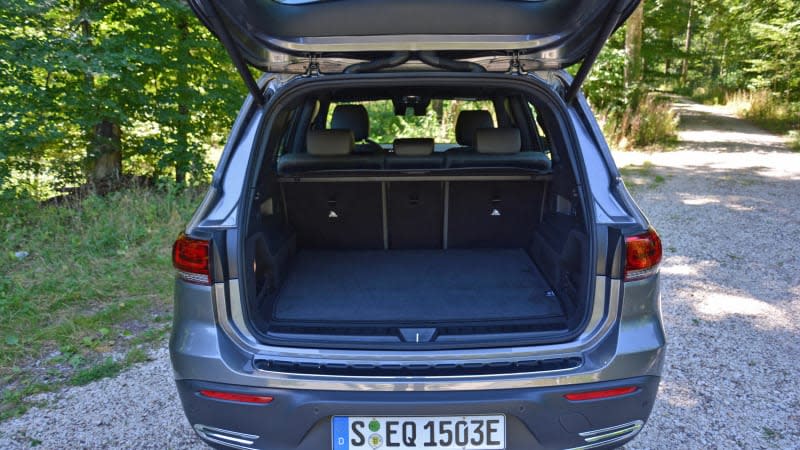
Going electric doesn’t sacrifice cabin space, which is one of the GLB’s strongest assets. The EQB can comfortably carry four adults and their gear in its five-seater configuration, even if the rear passengers are on the taller side. Mercedes-Benz offers third-row seats at an extra cost but they’re an odd trade-off: They give you the ability to carry two small passengers while reducing the trunk’s usable volume to that of a Lamborghini Aventador’s. Speaking of trunk space, don’t look for a frunk. Pop the hood and you’ll see part of the EQB’s electric guts. Rothfelder told me adding a frunk would have been possible, but engineers decided not to because the trunk is big enough as-is. He’s not wrong: The five-passenger model measures about 27 cubic feet and provides a stunning amount of room for stuff.
Buyers have two EQB flavors called EQB 300 and EQB 350, respectively, to choose from. Both are fitted with a pair of electric motors (one per axle) for through-the-road all-wheel-drive and a lithium-ion battery pack with 70.5 kilowatt-hours of usable energy. The biggest difference between the two models is the drivetrain’s output. It’s rated at 225 horsepower and 288 pound-feet of torque in the 300, and 288 hp and 384 lb-ft in the 350. Mercedes-Benz hasn’t released range information yet, but it notes that both models are built on a 400-volt electrical architecture and max out at 100 kilowatts of charging capacity.

 Yahoo Autos
Yahoo Autos 
